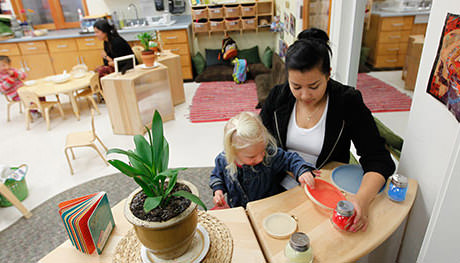The early childhood experience involves planning for a variety of environments. The physical environment may be the first one that comes to mind. But the social, intellectual, and emotional environments are equally important and critical to children's overall well being. Remember that the environment — in all of its aspects — is our partner in providing high quality early childhood programs.

How do your routines and schedule impact the social and emotional environments? Are there aspects of your physical environment that seem to continually be the center of unwanted behaviors?
Over the next two weeks, observe and document where and when unwanted behaviors occur. Study your observations.
Use this template to record your observations, thoughts, and feelings. Download the Template
Deepen your understanding of the role of the environment in guiding children's behavior by reading the Topic: Strategies for supporting children's emotional development in Performance Area 1 in the CA ECE Competencies. Scroll to page 31.
Can you find other places in this competency area that address these questions?
